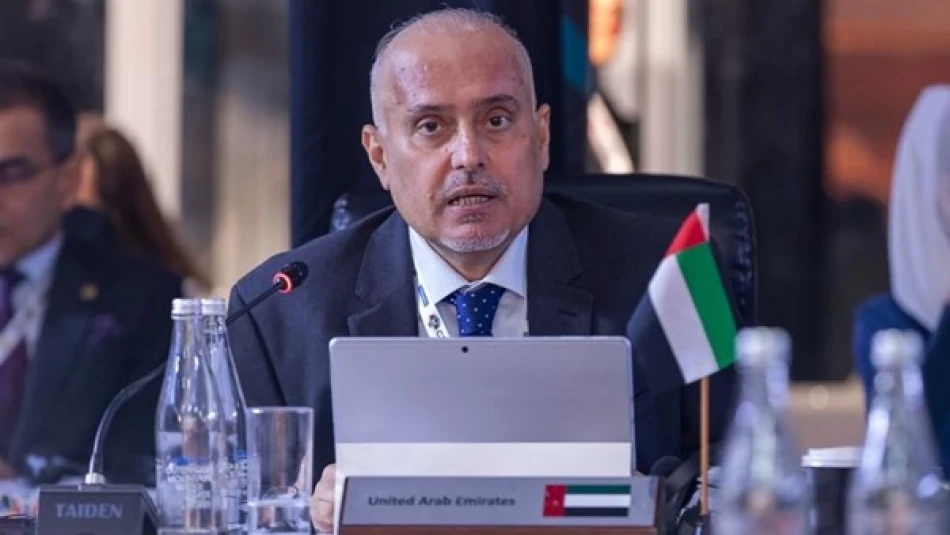
Emirati Youth Power: Driving Half the Workforce, Expert Insights
UAE Positions Itself as Youth Employment Model at G20 Summit
The UAE is leveraging its remarkable youth employment statistics to establish itself as a regional leader in workforce development, presenting compelling evidence at the G20 Labor Ministers meeting in South Africa. With youth comprising half of its workforce and citizen employment surging 325% over three years, the Emirates is demonstrating how strategic investment in future-focused skills can drive economic transformation.
Impressive Growth Metrics Signal Economic Momentum
Dr. Abdulrahman Al Awar, UAE Minister of Human Resources and Emiratisation, revealed striking employment figures that underscore the country's economic diversification success. The UAE labor market expanded by 12% in workforce size while companies grew by 17%, creating a robust foundation for sustained growth.
The standout achievement lies in the 325% increase in Emirati citizen workforce participation since launching the "Nafis" program three years ago. This dramatic surge reflects the government's systematic approach to reducing dependence on expatriate labor while building domestic talent capacity.
Strategic Alignment with Future Economy Sectors
The UAE's workforce development strategy deliberately targets high-growth sectors including artificial intelligence, digital services, healthcare, education, and manufacturing. This forward-looking approach positions the country to capture value in emerging technologies rather than simply adapting to change.
The "5000 Digital Talents" initiative exemplifies this strategy, directly addressing the global shortage of tech-skilled workers while building competitive advantage in digital transformation sectors.
Gender Equality as Economic Driver
Perhaps more striking than youth employment figures are the UAE's gender parity achievements, which demonstrate how inclusive policies can accelerate economic growth. Women now represent 66% of government sector employees, with over 30% holding leadership positions.
The private sector shows equally impressive momentum, with female workforce participation growing 21%. Notably, women fill 46% of skilled positions in private companies, indicating genuine career advancement rather than token participation.
International Recognition Validates Progress
These achievements translate into concrete international standings. The UAE ranks first in the Middle East and North Africa on the UN Development Programme's Gender Equality Index, while scoring 82.5 out of 100 on the World Bank's "Women, Business and the Law 2024" report.
Such rankings matter beyond prestige—they influence foreign investment decisions and talent attraction, creating positive feedback loops for continued growth.
Regional Implications and Competitive Positioning
The UAE's G20 presentation serves multiple strategic purposes. By showcasing successful youth and gender integration policies, the Emirates positions itself as a model for other Gulf states grappling with similar demographic and economic diversification challenges.
This approach mirrors Singapore's historical strategy of leveraging human capital development to punch above its economic weight on the global stage. Like Singapore in previous decades, the UAE is using workforce innovation to attract multinational headquarters and high-value industries.
Investment and Policy Implications
For international businesses, the UAE's workforce metrics suggest a maturing economy with increasingly sophisticated domestic talent pools. The emphasis on AI and digital skills particularly appeals to technology companies seeking regional hubs with relevant expertise.
The gender equality progress also signals reduced social and regulatory risks for companies prioritizing diversity initiatives, potentially influencing location decisions for regional operations.
Challenges Behind the Success Story
While the statistics are impressive, they reflect a relatively small absolute population base, making percentage growth easier to achieve than in larger economies. The real test will be maintaining this trajectory as the workforce scales and competition for talent intensifies regionally.
Additionally, the UAE's success depends heavily on continued economic diversification away from oil revenues, requiring sustained investment in the very sectors where it's building workforce capacity.
Nevertheless, the Emirates' systematic approach to workforce development—combining strategic sector focus, inclusive policies, and measurable outcomes—offers a replicable framework for other economies seeking to maximize their human capital potential in an increasingly competitive global landscape.
Most Viewed News

 Layla Al Mansoori
Layla Al Mansoori






